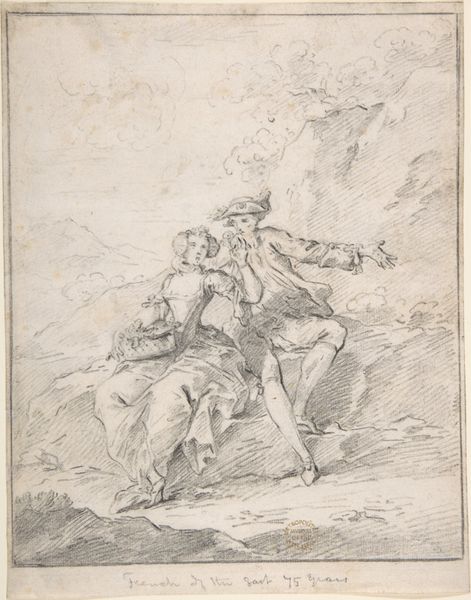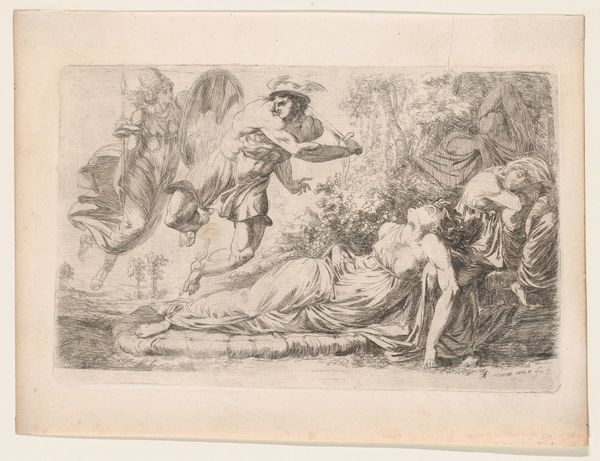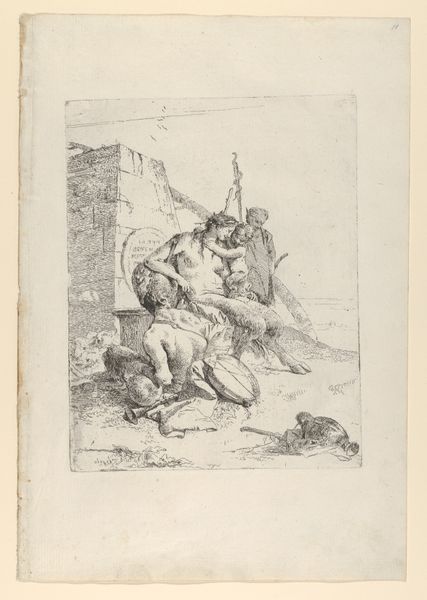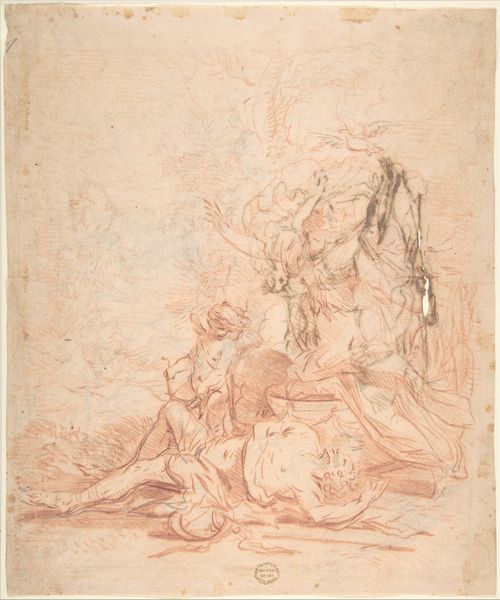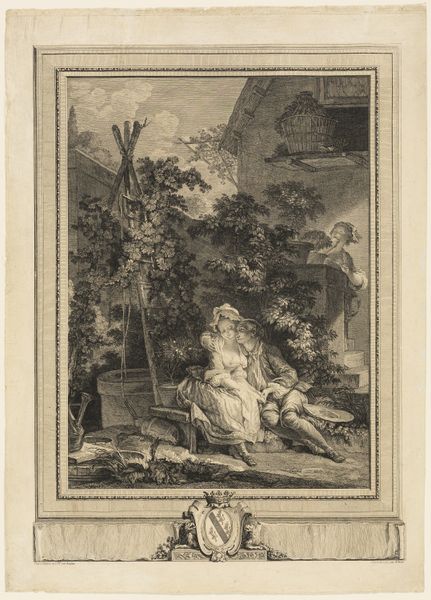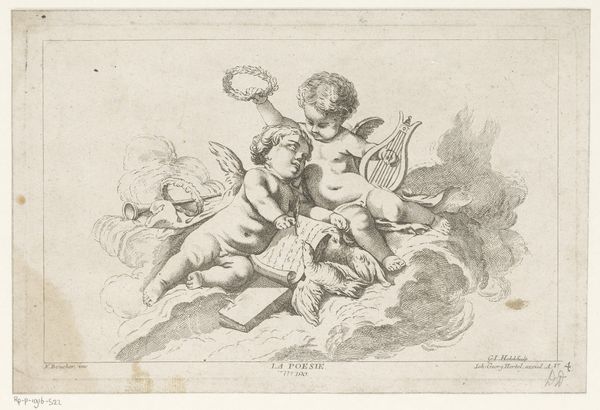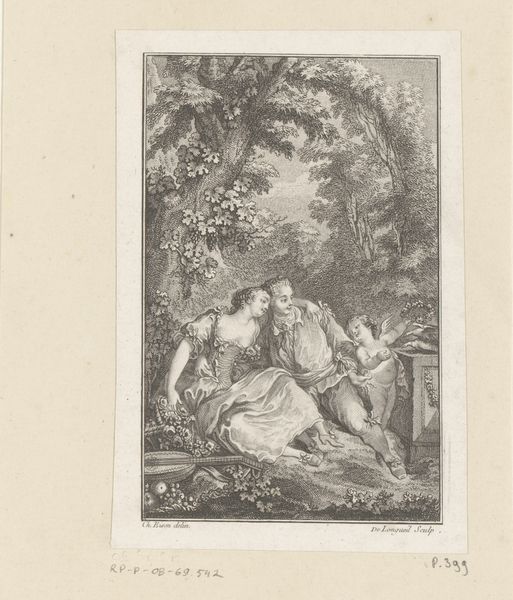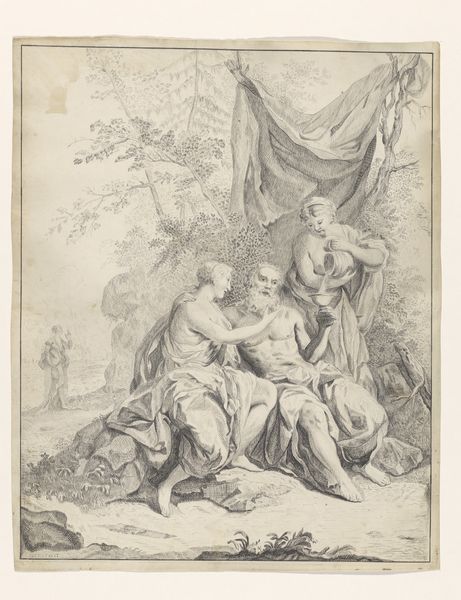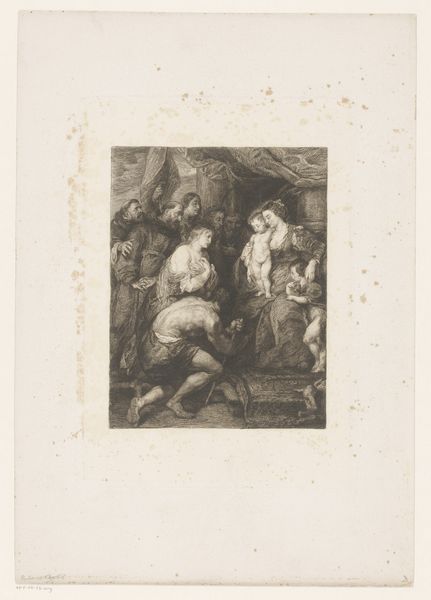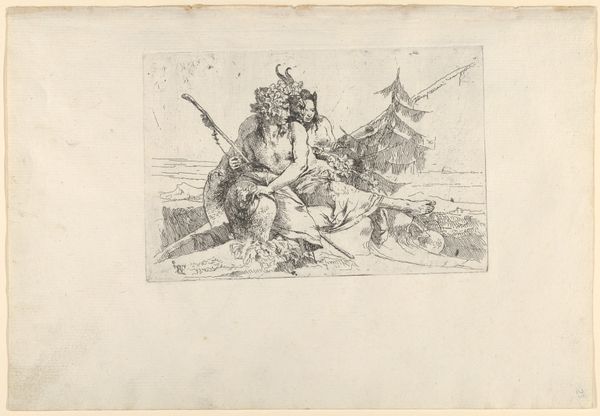
A Mother with two Children, from the Scherzi 1725 - 1780
0:00
0:00
drawing, print, etching
#
drawing
#
baroque
# print
#
etching
#
landscape
#
figuration
#
genre-painting
Dimensions: Plate: 8 13/16 x 6 15/16 in. (22.4 x 17.6 cm) Sheet: 13 1/2 x 9 1/4 in. (34.3 x 23.5 cm)
Copyright: Public Domain
Curator: This is "A Mother with two Children, from the Scherzi," an etching created by Giovanni Battista Tiepolo sometime between 1725 and 1780. It’s currently held in the collection of the Metropolitan Museum of Art. Editor: My first impression is of a strangely melancholic pastoral scene. Despite the domestic tableau, the stark monochrome etching gives it an almost ghostly quality. The arrangement has a fragmented feel that disrupts traditional pictorial logic. Curator: Indeed, it's one of Tiepolo's Scherzi, or "capricious subjects"—etchings known for their enigmatic and often unsettling imagery. Note the prominence given to figures of everyday life amidst ruins. Here we have a mother with her children resting by the ruins and donkeys. There's even an owl perched above it all. This isn’t simply a scene but is instead imbued with possible interpretations related to themes such as life cycles or cultural memory. Editor: From a formal standpoint, the artist’s linework creates varied tonal values. This manipulation provides depth without using many darker pigments. It highlights texture against smooth patches in the blank area of the etching that feels unbalanced compositionally with negative space surrounding the grouping of forms. I do find it to be a somewhat destabilizing balance overall; even in baroque art with so much movement there is a feeling that the arrangement could tilt at any minute. Curator: Yes, that disquiet might speak to what these ruins represented: loss, the ephemerality of human accomplishment—perhaps a reflection on the passing of empires and cultures. The choice to situate common people against this backdrop amplifies this interplay. We're drawn to contemplate transience. Editor: So it’s more than mere decoration. The composition becomes the framework to contextualize themes and make cultural arguments through a careful ordering of material? I’m noticing Tiepolo creates strong contours to define edges along subjects which, because they’re lacking color, causes silhouettes which pull the eye and contribute significantly more because it helps with immediate recognition. Curator: Precisely. Tiepolo uses these motifs – ruins, ordinary folk – to make observations about existence, memory, and history. This scene captures a world caught between past glory and present-day realities. The figures, the architectural features, and the etching medium itself merge as symbols loaded with layers of meaning and artistic technique that is not easily summarized even now centuries after it was crafted! Editor: I see now, considering his formal artistry this really isn't a casual snapshot. And viewed alongside the themes, Tiepolo created quite a provocative meditation here using what looks like an unassuming medium.
Comments
No comments
Be the first to comment and join the conversation on the ultimate creative platform.

